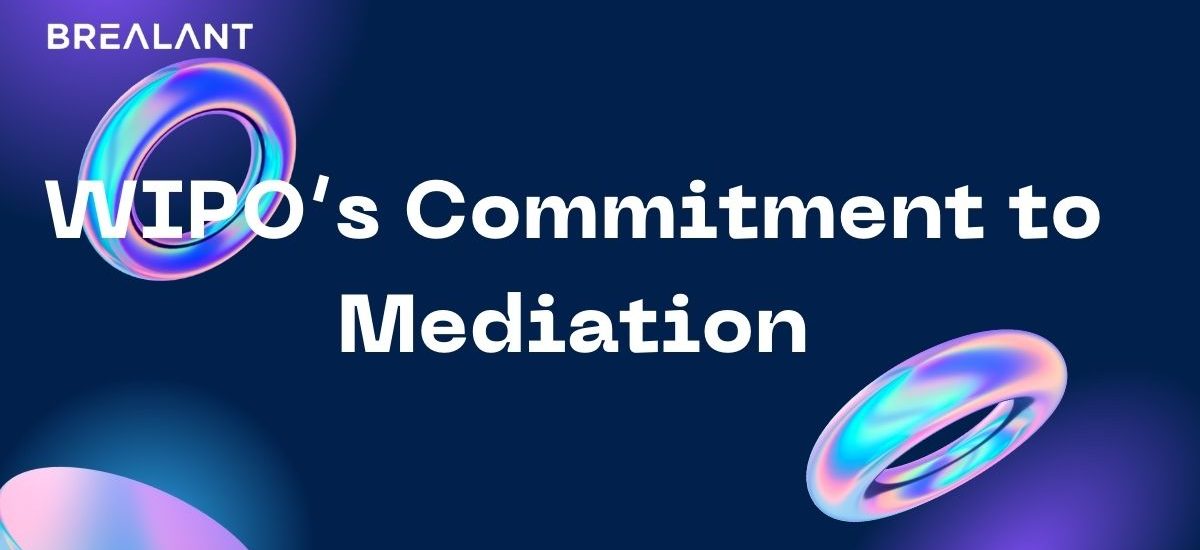Mediation is an effective and often overlooked method for resolving intellectual property (IP) disputes. It offers a unique opportunity for parties to come together and find common ground, avoiding the time-consuming and costly litigation process. In this blog, we will explore the significance of mediation in the context of IP disputes through the lens of the World Intellectual Property Organization (WIPO). We will highlight its services and benefits to those seeking to protect their IP rights.
WIPO’s Commitment to Mediation
WIPO, as a global leader in intellectual property matters, firmly commits to providing effective dispute resolution mechanisms. Mediation is a cornerstone of WIPO’s efforts to address IP disputes, offering several key services.
WIPO Mediation Services
- Trained Mediators: WIPO maintains a roster of experienced and skilled mediators well-versed in IP law. These mediators come from diverse backgrounds and regions, ensuring that parties in dispute have access to professionals with the expertise necessary to facilitate productive discussions.
- Customized Mediation Proceedings: WIPO provides parties with the flexibility to tailor mediation proceedings to their specific needs. This ensures that the process is adaptable and responsive to the unique characteristics of the dispute.
- Neutrality and Impartiality: One of the fundamental principles of WIPO’s mediation services is the guarantee of neutrality and impartiality. This creates an environment of trust and fairness for all parties involved, increasing the likelihood of reaching a mutually agreeable resolution.
- Expedited Process: Mediation, in comparison to traditional litigation, is often a quicker process. WIPO’s mediation services aim to accelerate the resolution of disputes, helping parties save valuable time and resources.
The Benefits of Mediation in IP Disputes
- Cost-Effective: Litigation can be a significant financial burden, with legal fees, court costs, and the potential for lengthy trials. Mediation, on the other hand, is typically more cost-effective, making it a suitable option for parties looking to manage their expenses.
- Preserve Relationships: Mediation promotes open communication and cooperation, fostering a more positive and collaborative environment. This can be particularly crucial for businesses where preserving relationships with suppliers, partners, or competitors is essential.
- Confidentiality: Mediation is a private process, and discussions during mediation are typically confidential. This allows parties to explore solutions without fearing public disclosure, protecting sensitive business information and strategies.
- Flexible and Creative Solutions: Mediation encourages creative problem-solving. Parties can explore a wide range of solutions that might not be available through litigation. This flexibility can lead to innovative and mutually beneficial outcomes.
WIPO’s Success Stories
WIPO has a strong track record of successful mediation in the IP field. For example, in a case involving a dispute over domain names, WIPO’s mediation services helped parties come to an agreement that protected the legitimate interests of both sides. This case illustrates the effectiveness of WIPO’s neutral and expert mediation services.
Conclusion
Mediation, as exemplified by WIPO, is a valuable tool in resolving intellectual property disputes. It offers a cost-effective, efficient, collaborative approach to protecting relationships and sensitive information. WIPO’s commitment to providing mediation services, with its experienced mediators and reputation for neutrality, positions it as a trusted resource for those seeking to protect their IP rights. By choosing mediation over litigation, parties can unlock the power of cooperation and reach mutually beneficial solutions that benefit both sides. Ultimately, mediation aligns with WIPO’s mission to promote and protect intellectual property rights, contributing to a more innovative and harmonious global IP landscape.










